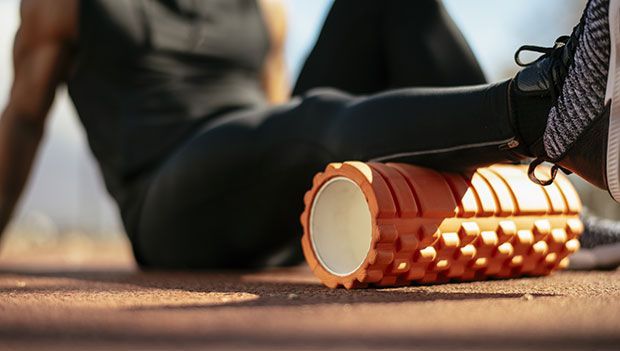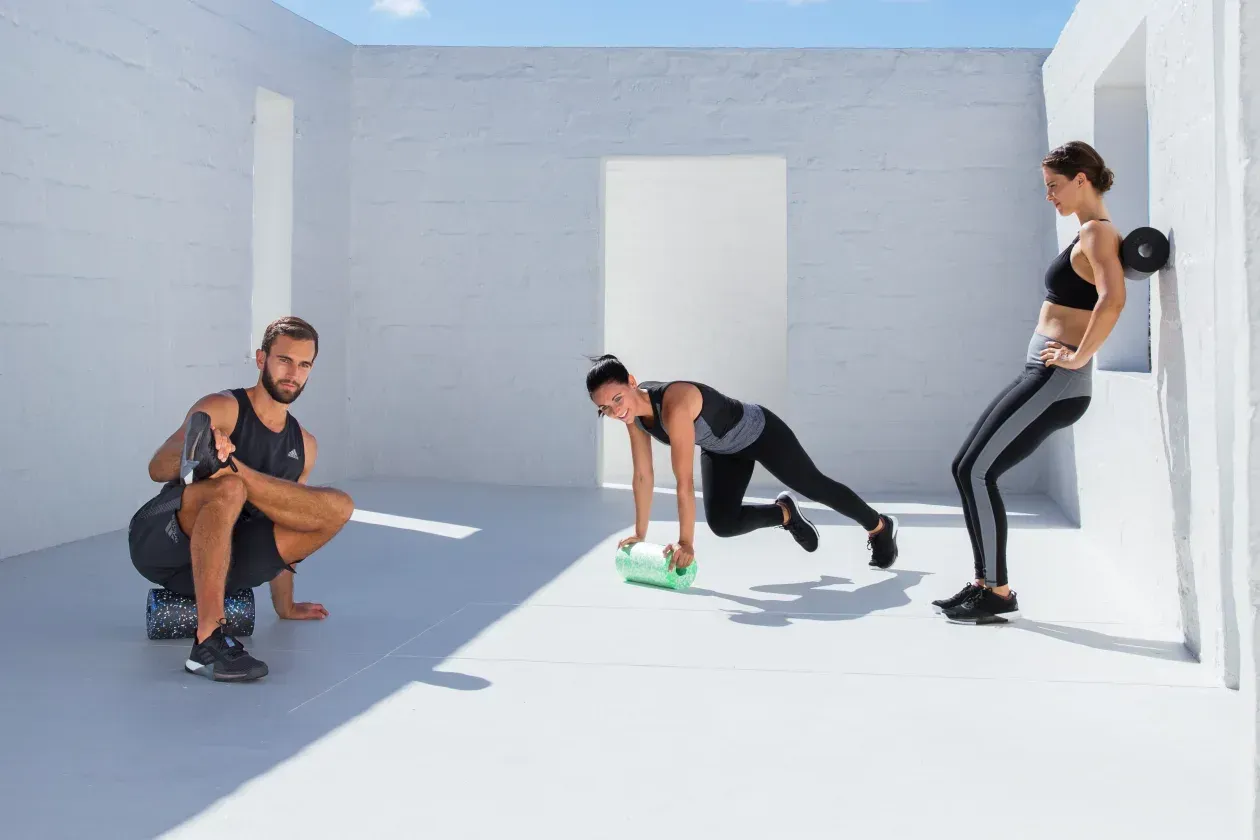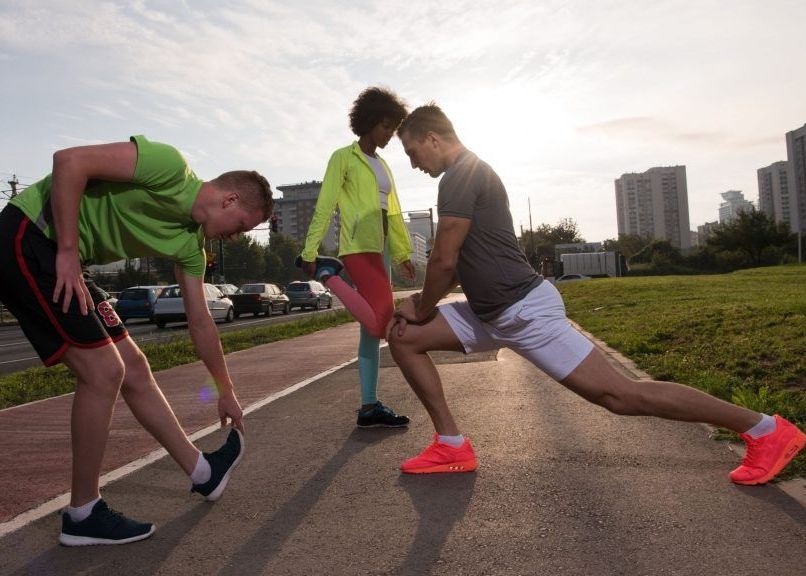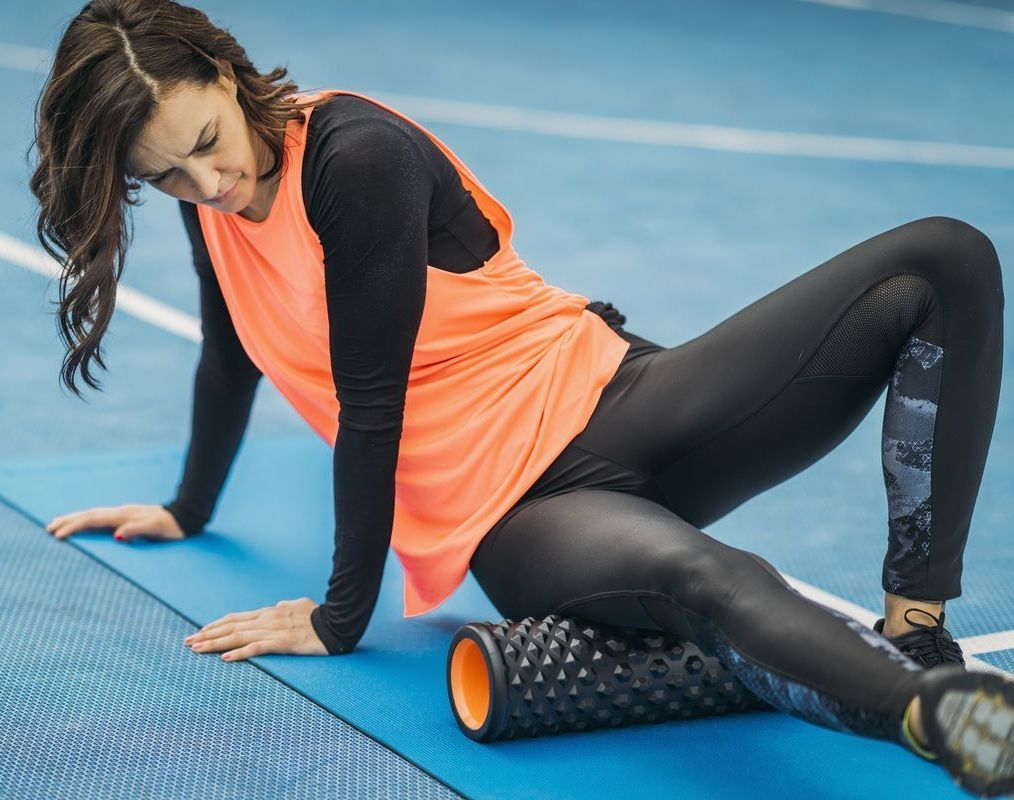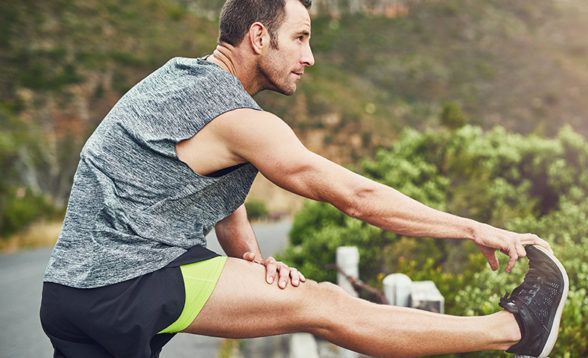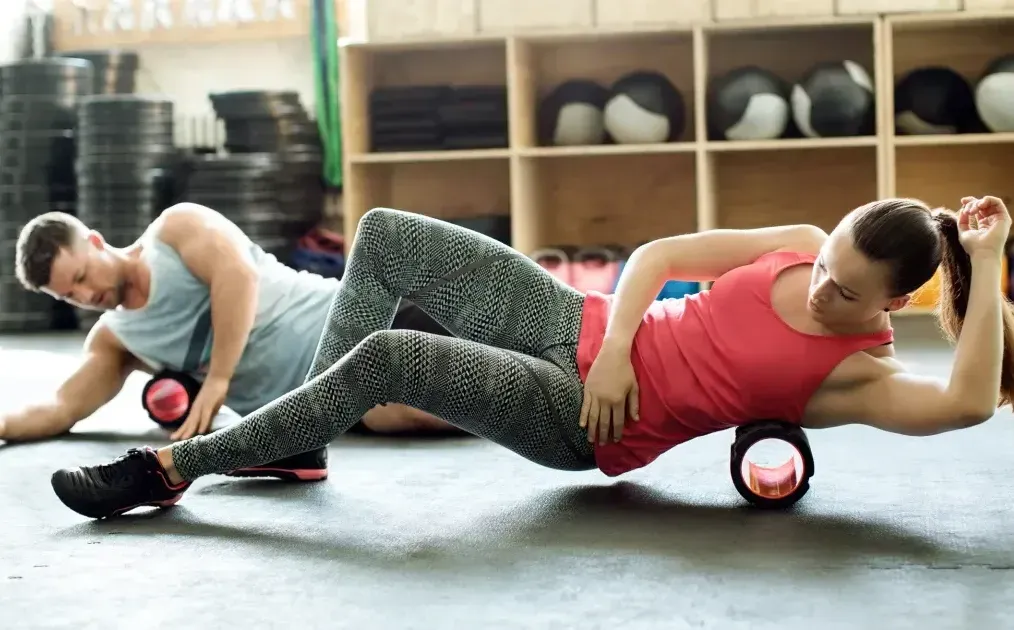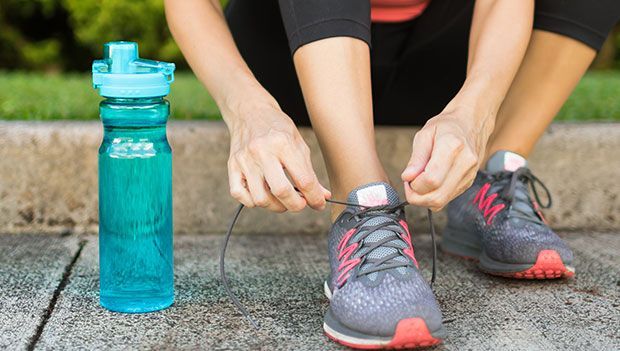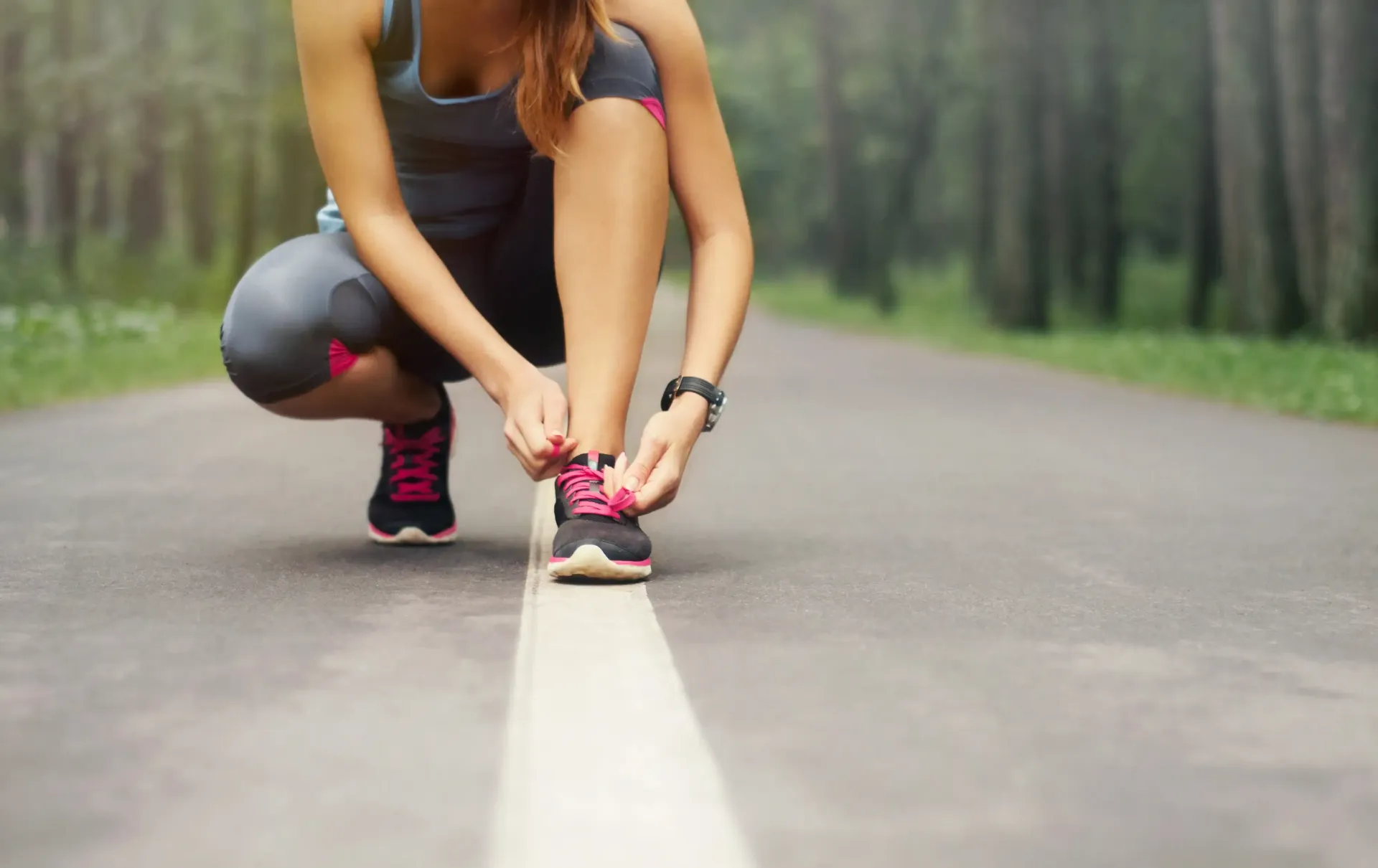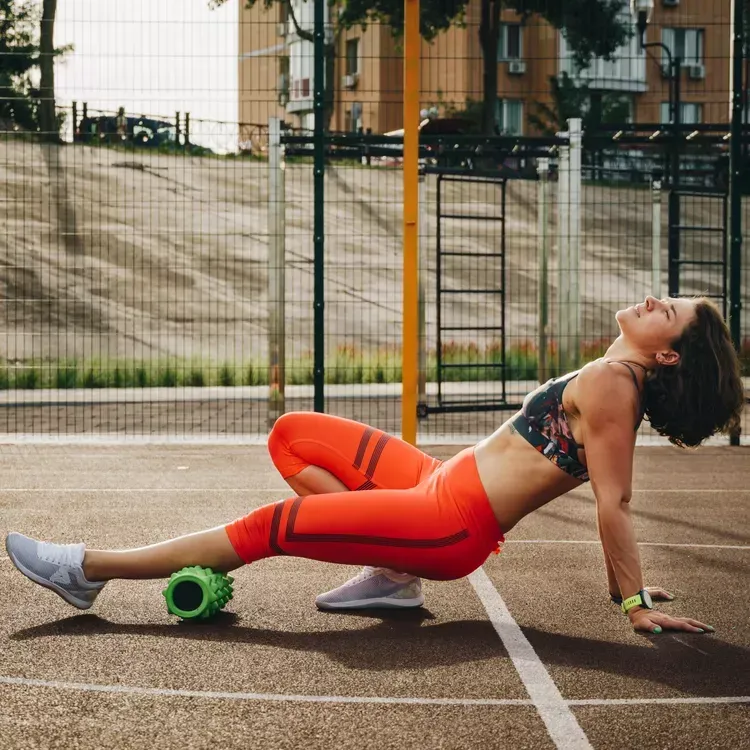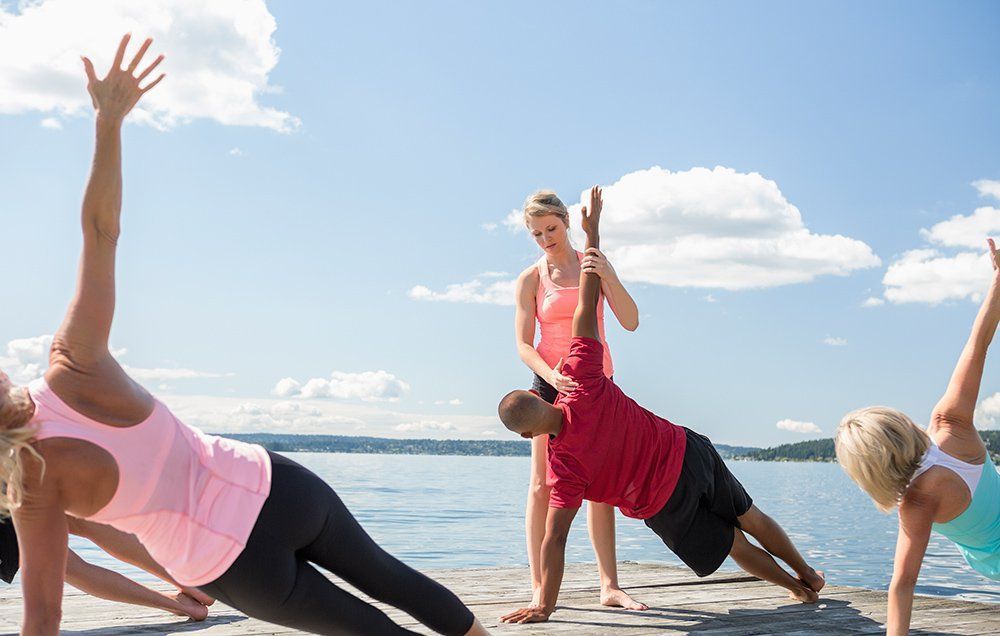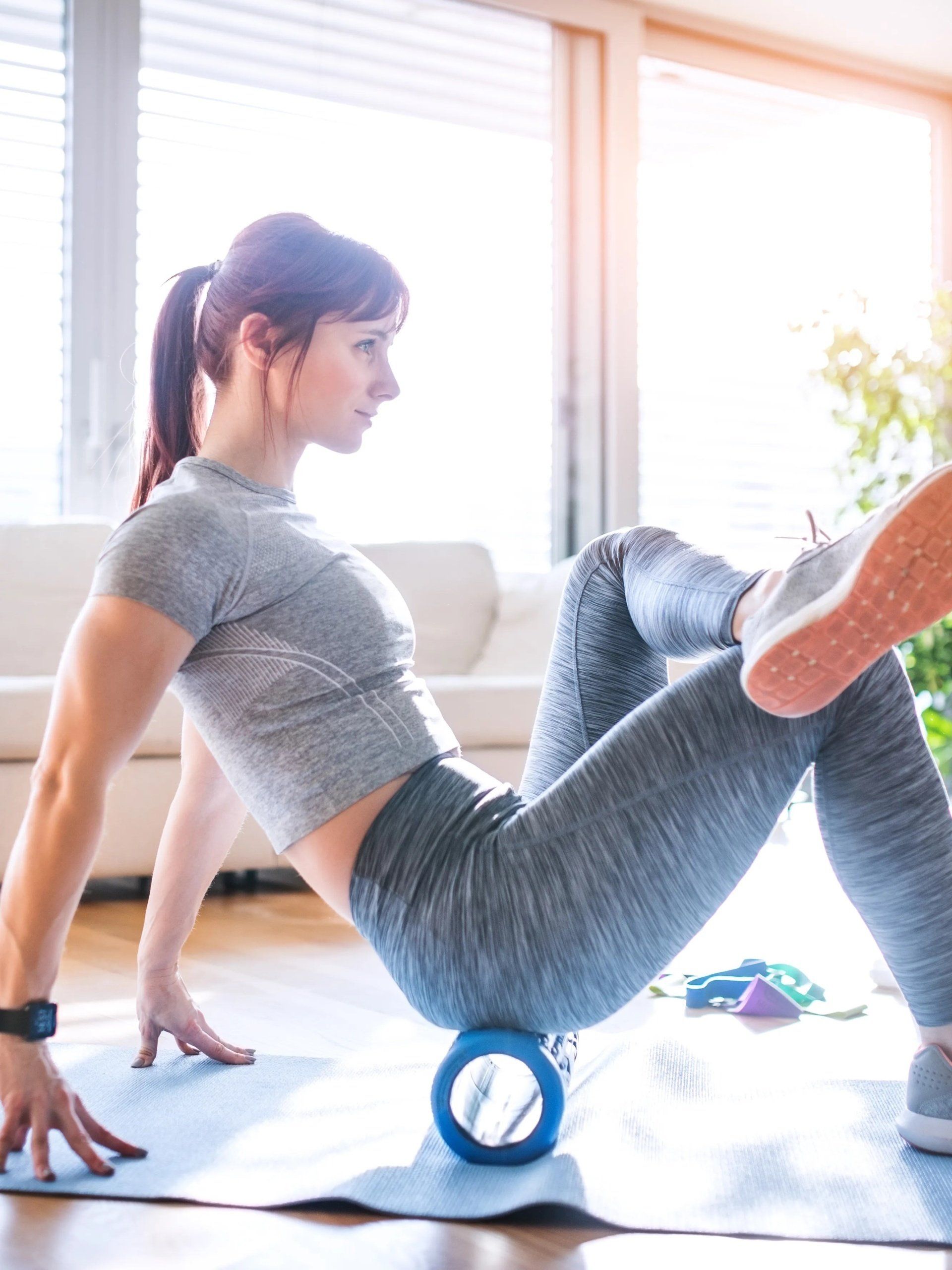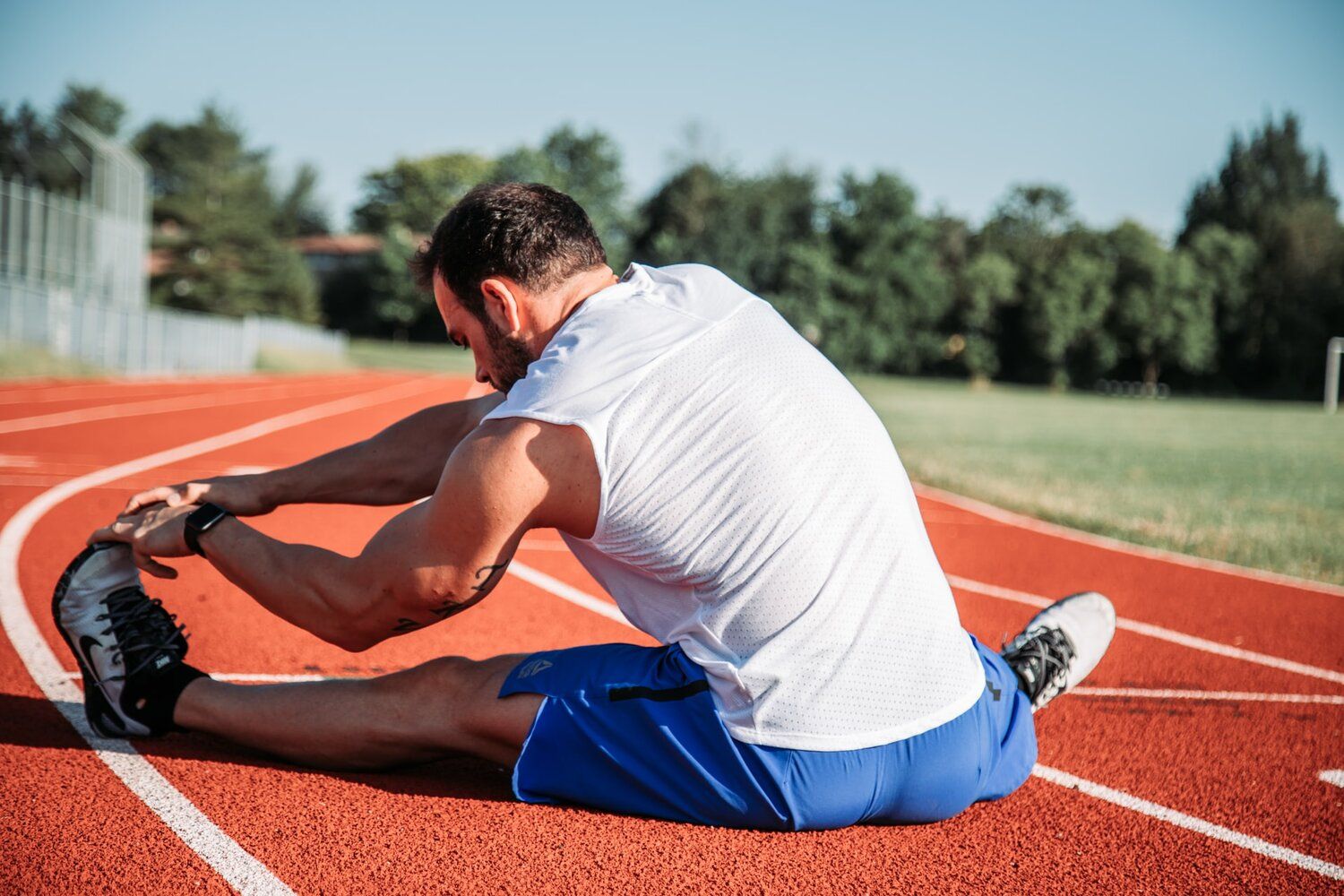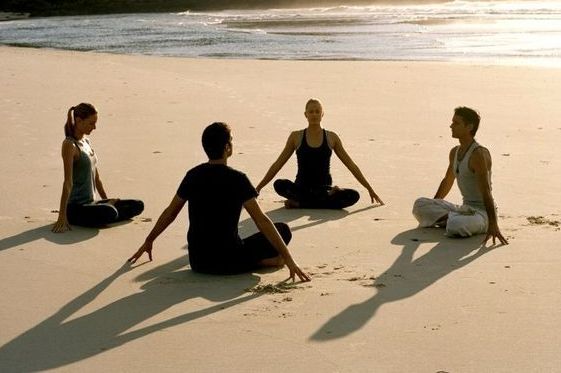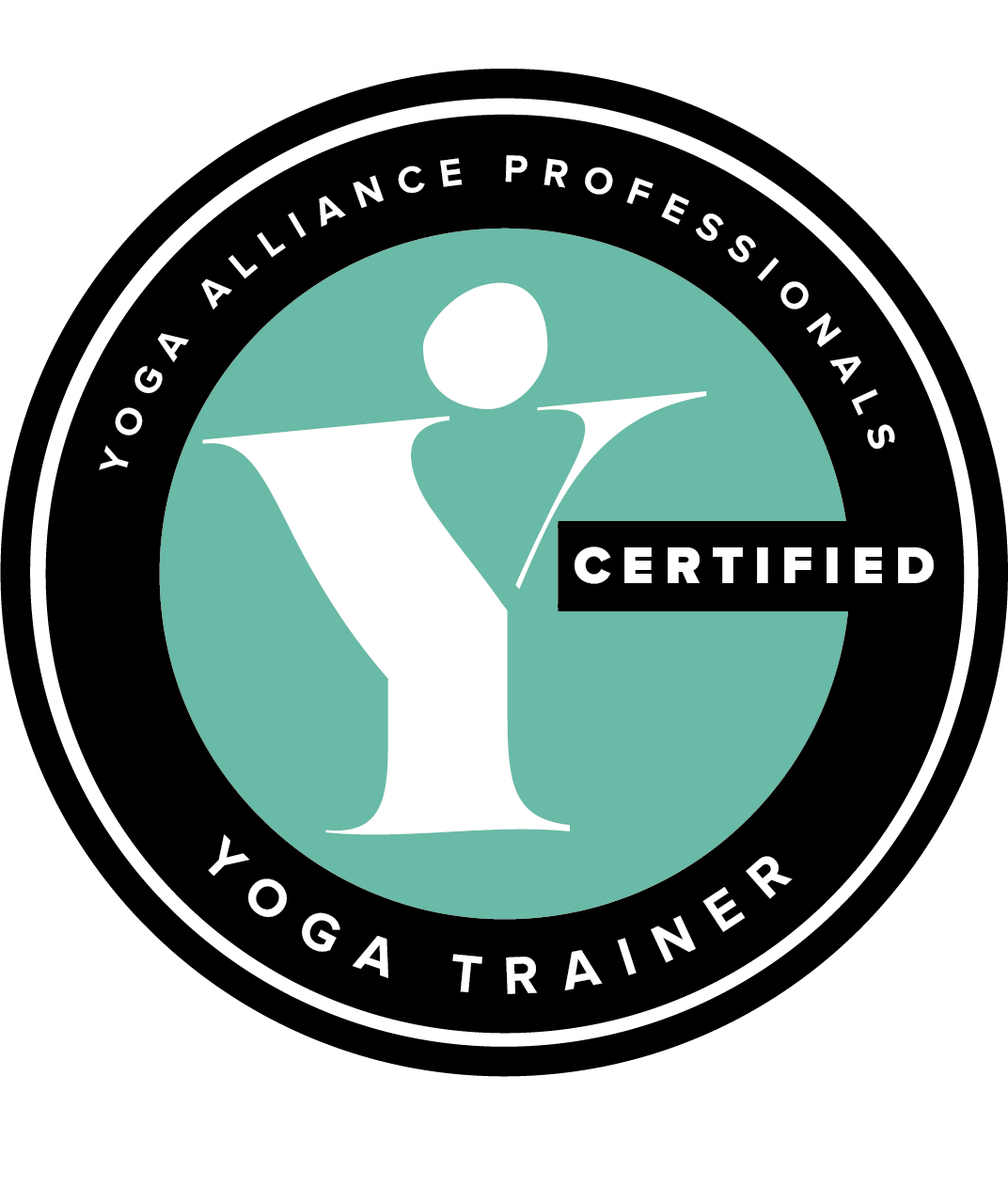A Guide to Running and Recovery
Running is a fantastic way to stay in shape, increase your endurance, and clear your mind. However, like any physical activity, it can come with risks, such as injuries, muscle strains, and soreness. That’s why it’s essential to work on injury prevention and recovery techniques.
In this post, we’ll go over some of the best ways to prevent running-related injuries, recover quickly from them, and incorporate yoga techniques into your routine to keep your body in top shape.
>>>
Get 13 Yoga Postures For Runners FREE Guide
<<<
1. Why running and recovery with yoga and foam rolling are important
2. How to start running: tips for beginners
Starting a new fitness activity can be daunting, especially if you’re a beginner, but there are some tips that can make the transition easier. Before you lace up your shoes, it’s important to check with your doctor to make sure you’re healthy enough to start running.
Beginners should start with a walk-run approach, starting with shorter distances and gradually increasing. A good approach is to start with a 5-minute walk and then alternate 30 seconds of running with 1-2 minutes of walking in-between, for a total of 20-30 minutes. As you progress, you can increase the running time and decrease the walking time until you’re able to run continuously for longer distances.
Invest in a good pair of running shoes that fit well and provide the necessary support to reduce the risk of injury. Get expert advice on the right type of shoes for your feet. Some specialized run shops will do onsite assessment of your cadence to determine the right shoes for you.
When you buy a new pair of running shoes, take your old pair to the store. The sales assistant will be able to look at the wear patterns on your old pair, to determine if you pronate or supernate. Or if you need extra support for your arches. This information will guide them to select the right running shoes for your feet.
A runner's feet may have small variants, seemingly inconsequential. However, once you start piling on the miles, these small issues, if not addressed, can become a problem, even lead to an injury.
Beside choosing the right footwear, another challenge for most beginners is deciding how much to run at the start. The key is to listen to your body and take rest days when needed. Rest and recovery are just as important as the running itself.
Additionally, warming up with dynamic movements before a run and stretching after can help prevent muscle soreness and injury. Establishing a routine of yoga and foam rolling will help stretch and release tight muscles, reduce soreness, and improve flexibility. Starting your running journey with a focus on strategies that help prevent injury and improve overall performance, will guarantee your enjoyment of this sport.
3. The importance of proper warm-up and cool-down
4. The benefits of incorporating yoga into your running routine
Incorporating yoga into your running routine can have numerous benefits for your body and mind. One of the most significant benefits is that yoga can help improve your flexibility and mobility. Runners often experience tightness in their hips, hamstrings, and calves, which can lead to injuries and decreased range of motion. Practicing yoga regularly will lengthen and stretch these muscles, thus reduce the risk of injury and improve your overall running form.
Yoga also improves your balance and stability, which can be particularly helpful for trail runners or those who run on uneven terrain. The regular practice of yoga will strengthen your core and improve your posture, leading to better running performance and less fatigue.
Another benefit of incorporating yoga into your running routine is the mental clarity and focus it provides. Yoga is known to help reduce stress and anxiety, as well, it improves your ability to concentrate and focus. This can be particularly helpful during long runs, or if you hit a mental wall during a race, when fatigue start to set in.
Incorporating yoga into your recovery routine will help reduce muscle soreness and aid in the recovery process. This is because, when you do a yoga flow sequence, it increases blood flow and circulation, which can help flush out toxins and promote healing in the body.
Mixing yoga into your running routine can have numerous benefits for both your physical and mental health. Whether you are a beginner or an experienced runner, adding yoga to your routine will help you become a stronger, more balanced, and more mindful athlete.
5. Yoga poses for runners: stretches and strengthening exercises
Yoga improves your running performance by increasing your flexibility and core strength. Practicing yoga helps you to pause. You can then, take notice of small nuances, such as, whether your muscles are tighter on the right or left side of your body. Tune into where your body holds tension, and whether you have developed movement patterns, that compensate for a past injury. Doing yoga can help prevent injury and increase your recovery faster after an endurance run.
Here are some yoga poses that are particularly beneficial for runners:
1. Downward-Facing Dog: This pose targets the hamstrings, calves, and Achilles tendons, all areas that c an become tight and sore from running. Begin on your hands and knees, then lift your hips up and back, straightening your arms and legs. Press your heels towards the floor to deepen the stretch.
2. Low Lunge: This pose stretches the hip flexors, which can become tight from running. From downward- facing dog, step your right foot forward between your hands. Drop your left knee to the ground and lift you r torso, bringing your hands to your right knee. Hold for several breaths, then repeat on the other side.
3.
Warrior II:
This pose strengthens the legs and core, while also stretching the hips and groin. From low lunge, bring your back foot forward to stand, then turn your left foot out and your right foot in. Bend your lef t knee, keeping it directly over your ankle, and extend your arms out to the sides. Hold for several breaths , then repeat on the other side.
4. Tree Pose:
This pose improves balance and strengthens the ankles, both important for runners. Stand with your feet hip-width apart, then shift your weight onto your left foot. Bring your right foot to rest on your left inner thigh, pressing your foot into your thigh and your thigh into your foot. Bring your hands to your heart center, then hold for several breaths before repeating on the other side.
Incorporating these yoga poses into your running routine will help you to become a stronger, more flexible , and injury-free runner!
6. How to use a foam roller for recovery and injury prevention
7. Common running injuries and how to prevent them
Running is a great way to stay fit and healthy, but it is also a high-impact sport that can cause injuries if not done properly.
Here are some common running injuries and tips on how to prevent them:
1. Shin splints - this is a common injury for runners, caused by overuse of the shin muscles. To prevent it, always warm up before you run, wear proper shoes, and gradually increase your mileage.
2. Plantar fasciitis - this is a painful inflammation of the tissue on the bottom of the foot. To prevent it, wear shoes with good arch support, stretch your calves regularly, and avoid overuse.
3. IT band syndrome - this is a common injury for runners, caused by inflammation of the IT band that run s from the hip to the knee. To prevent it, stretch your legs regularly, wear proper shoes, and gradually increase your mileage.
4. Runner’s knee - also known as
patellofemoral pain syndrome, this is a common injury that causes pain around the kneecap. To prevent it, wear proper shoes, stretch your legs regularly, and avoid overuse.
In addition to these tips, it’s important to listen to your body and take rest days when needed. Incorporating yoga and foam rolling into your routine can also help prevent injuries and aid in recovery. By taking care of your body, you can enjoy the many benefits of running without the risk of injury.
8. How to recover properly after a long run
9. The benefits of rest days and active recovery
Rest days and active recovery are crucial for any runner, whether you’re a beginner or a seasoned pro. Rest days allow your body to repair and recover, which is essential for avoiding injury and improving performance. Active recovery, on the other hand, involves low-intensity exercises that help to increase blood flow and promote faster recovery.
The benefits of rest days and active recovery are numerous. Rest days allow your muscles to repair and rebuild themselves after a tough workout, which can help to prevent injury and improve performance. They also allow your mind to recharge, which is just as important as physical recovery.
Active recovery, on the other hand, can help to speed up the recovery process by promoting blood flow to your muscles. This increased blood flow helps to flush out waste products that build up during exercise, such as lactic acid, and brings in fresh oxygen and nutrients that are essential for repairing and rebuilding muscle tissue.
Yoga and foam rolling are two great ways to incorporate active recovery into your routine. Yoga helps to i mprove flexibility, balance, and strength, all of which are important for running. Foam rolling, on the other hand, is a form of self-massage that helps to release tension and knots in your muscles, which can help t o improve your range of motion and reduce the risk of injury.
Incorporating rest days and active recovery into your training plan can be just as important as the running itself. By taking the time to rest and recover properly, you’ll be able to avoid injury, improve your performance, and make progress towards your running goals.
10. Combining running, yoga, and foam rolling for a healthy and sustainable fitness routine.
